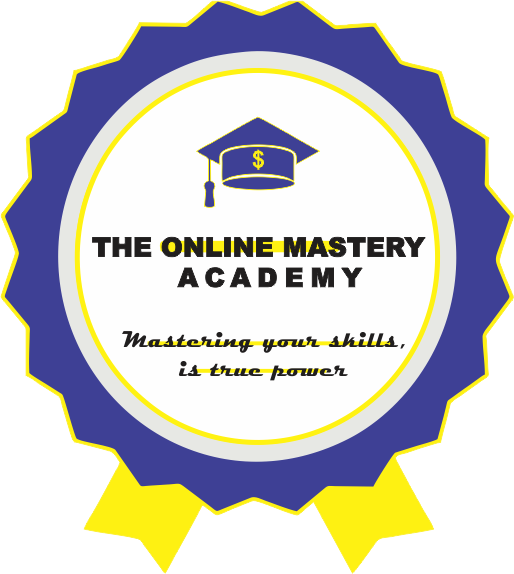The comprehensive procedure that helps your website rank higher in search engine results or the process of driving traffic via unpaid, editorial, natural, or organic search results in search engines is commonly referred to as SEO or search engine optimization. This article will explain in details how search engine optimization works. When you enter a search term into Google, the search engine must choose which websites that displays it to you. In order to improve organic website traffic to your business, SEO makes it possible for your website to show up in the top 5 search results for pertinent search terms. The majority of users genuinely only scroll through the first five results. If you are not willing to try Pay per Click so you can be on the sponsored search results, then SEO is the only thing you can do to appear on that first page.
SEO seeks to raise the position of your website in search results pages. Keep in mind that more individuals will view a website the higher it appears on the list.
actions For effective SEO
- Finding appropriate keywords with high potential for search traffic
- Creating valuable material of the highest caliber and optimizing it for both consumers and search engines
- Including pertinent links from reputable websites
- Evaluating the outcomes
The benefits of SEO
Search engine optimization is now regarded as a crucial marketing strategy.
This is due to the fact that visitors typically navigate the web through search. A site will often see greater traffic if it can move up the list of search results, which is given in alphabetical order. For instance, the top result for a normal search query will receive between 40 and 60 percent of all traffic, whereas results two and three will receive far less traffic overall. Only 2 to 3 percent of searchers click past the first page of results.
A website may thus see an increase in visitors and perhaps prospective business as a result of even a slight improvement in search engine results.
Due to this, many companies and website owners may attempt to sway the search results in their favor compared to their rivals, the site appears higher on the search results page.
Top SEO tools
SEO relies on a variety of programs and tools to assist with website optimization. Here are some frequently used tools, both free and paid:
- Google Search Console – Google Search Console (previously known as “Google Webmaster Tools”) is a common tool in the SEO’s toolbox that is offered by Google for free. Google Search Console assists in spotting and resolving technical issues on the website and gives rankings and traffic reports for relevant keywords and webpages.
- Google Ads Keyword Planner – Another free resource offered by Google as part of their Google Ads product is the Keyword Planner. Despite being made for paid search, it is an excellent SEO tool because it offers keyword ideas and keyword search volume, both of which are useful for conducting keyword research.
- Backlink analysis tools – There are several link analysis tools available. When building links users can utilize backlink analysis tools like AHREFs or SEMrush to discover links opportunities by looking at which websites is linked to their own or those of competitors in the same industry.
- SEO Tools – There are a variety of SEO tools available that combines many of the elements required for site optimization. The most well-known of these are Moz, AHREFs, SEMrush, Searchmetrics, and Linkdex. These tools assist with keyword research, tracking keyword rankings, finding on-page and off-page SEO opportunities, and a variety of other SEO-related duties.
- Social media -The majority of social media platforms don’t affect SEO directly, but they can be useful for networking with other webmasters and developing relationships that can lead to opportunities for link building and guest posting. Facebook, LinkedIn, and Twitter are a few examples.
Differences between paid and organic search
It’s critical that you recognize the distinctions between paid search and organic search sometimes known as SEO. There are five major distinctions:
1. Position
The top of search engine results pages for paid search results are being displayed, while those for organic results are displayed below them.
2. Time
Time is another another important distinction between paid and organic search. While results from organic search can take weeks, months, or even years to appear, results from paid search can occasionally be obtained in as little as a few minutes. Therefore, with organic search, you must play the medium- to long-term game.
3. Payment
As the term implies, paid search traffic is compensated when it comes to payment. You pay for each click (PPC) based on the cost per click (CPC). This implies that each time a user clicks on your advertisement, you are charged. Consequently, you buy traffic for your page by paying Google to display your ad when a visitor searches for your keyword, as opposed to depending on organic traffic to your website. Although it does involve a time and resource investment, traffic from organic search is free.
4. ROI
It’s actually lot simpler to calculate the return on investment, or ROI, using paid search. That’s partially because Google offers additional keyword information that Google Analytics can collect. The ROI of paid search, however, may stagnate or even decrease with time. ROI for organic search is a little bit more difficult to quantify, but it frequently gets better with time. Organic search can provide a very excellent return on investment over the long term.
5. Share of traffic
Approximately 20% to 30% of searchers click on paid results, while 70% to 80% of searchers click on SEO results when it comes to traffic share. Therefore, organic results receive a majority of clicks.
How Does Search Engine Optimization Works?
In order for Search engine optimization to work, your website must undergo certain design and content adjustments that make it more appealing to search engines. You do this with the anticipation that the search engine will list your website first on the results page. Google’s algorithm considers hundreds of ranking indicators when determining which websites to display in the search results and in what order. Although you can’t update your website to accommodate everyone, there are a number of best practices you may use to optimize your SEO.
For companies that are just getting started with building their websites, developing their product pages, or redesigning their websites. It can be intimidating to learn about SEO, or search engine optimization. Even if your company doesn’t have an experienced SEO expert on staff, you can still start making some changes that will benefit your SEO.
How Search Engines Rank Websites
The most pertinent material for a given search phrase is determined and presented by search engines like Google and Bing using a variety of ranking factors.
However, search engines must first crawl and index websites before they can accomplish that. Here is a definition of crawling, ranking and indexing.
Crawling
The process of discovery known as crawling takes place when search engines send out spiders or crawlers to look for fresh and updated content.
We utilize tools known as web crawlers to find publicly accessible webpages, claims Google.
Crawlers examine websites and click on links inside, much like you would if you were exploring the web for information.
They go between links, sending information about those websites back to Google’s computers.
The content may not only be a webpage but also an image, video, PDF file, blog post, etc.
But regardless of the structure, links are always used to find the content.
Make sure that every page of your website is crawled in order for you to appear in organic search results.
Indexing
Indexing is the method used by search engines like Google to arrange data prior to a search in order to quickly respond to user queries.
In general, web pages and other content that Google and other search engines are aware of include structured data.
The search engines can now utilize the knowledge they have about these pages and their content to determine whether or not to show this content in their search results once these pages have been indexed.
Ranking
Ranking comes as the third and ultimately most crucial phase. Only once crawling and indexing are finished can ranking take place. Your website can be ranked once a search engine has crawled and indexed it.
More than 200 ranking factors are used by search engines to categorize and rank content, and they all fall under one of the three SEO pillars: technical, on-page, or off-page optimization. Several illustrations of the signals that search engines employ to rank websites includes:
- If the term or a synonym was used on the page and in the title tag, it was present in the title tag.
- Web page loading time – Whether the web page loads quickly and is mobile-friendly
- Website standing – Whether the website and page are regarded as authoritative for the topic being searched for
Ordering and ranking results
The Google Hummingbird main search algorithm is in charge of selecting the rankings and order of search engine results. RankBrain is a machine-learning search engine component of the Google search engine. RankBrain uses artificial intelligence to connect unfamiliar words and phrases to similar search requests in order to better understand them.
By transforming keywords into well-known subjects and concepts, it enables Google to comprehend these inquiries, enabling it to deliver better search engine results even for unique queries. Websites that satisfy users and deliver the expected results are rewarded by RankBrain rather than those that try to rank as the best keyword-optimized result.
Getting the most out of RankBrain

An effective SEO plan entails optimizing your website to increase customer pleasure and experience as well as to make the most of the RankBrain ranking element.
The three best methods for doing this are as follows:
- Consider medium-tail keyword optimization (key terms consisting of two to three words).
- Create clickable page names and descriptions to increase the likelihood that people will click on your listing when searching. The percentage of people who find you on Google and then click over to your website is known as the click-through rate.
- Increase dwell time (how long visitors stay on the page) and decrease bounce rate using content optimization (the percentage of visitors who leave after only viewing one page).
Google’s top three Optimizer
- Links
- Content
- RankBrain
Optimizing search traffic: from clicks to conversions
When done correctly, search engine optimization has the potential to significantly increase the amount of traffic that websites receive, but this additional traffic won’t help a company grow until it turns into paying customers. Conversion rate optimization (CRO) can help with this.
A/B testing and other techniques are used in conversion rate optimization to make changes to websites and track their effects on conversion rates. Successful search marketers understand that driving traffic to a website is only the first step; what that traffic does after it gets there is equally essential.
CRO was formerly a challenging and complicated procedure, but now that tools like Optimizely exist, conducting tests to increase conversions on your website only requires adding a single line of Javascript. The best part is that you can alter a website using Optimizely’s visual editor without writing a single line of code.
Setting SEO objectives
Any SEO strategy must include setting SEO objectives. Setting SEO goals and coordinating them with your entire business goals is crucial because:
- They promote support from critical stakeholders.
- They assist you in developing your SEO plan.
- Goals are met attributable to them.
What should you Evaluate?
Setting goals may seem like a cumbersome process, but over the long run, tracking your progress will be quite beneficial for your SEO. What sort of things ought you to evaluate, then?
- Keywords
- Traffic
- Market share
- Brand awareness
- Lead generation
- Reputation
- E-commerce
Content Marketing
Content is useful for luring search engines and assisting your business in building relationships with website visitors. The significance of SEO can be further highlighted in your written and visual material. Search engines are more likely to rank your pages higher on the search engine results page the more high-quality, pertinent material you have on your website. Similar to this, your website’s users are more likely to stay on it for a while if it has interesting and useful information. Perhaps they’ll even purchase something.
Creating a variety of different content kinds is the key to producing material that is optimized for both search engines and your website’s human users. They ought to be well-written and cover the subjects that matter most to your audience. Remember that it’s also a big no to use duplicate content. To help you increase your content offering and, consequently, your search engine rankings, you can concentrate on the following
several forms of online content:
- Info graphics or more visual materials
- Tutorials and manual guides
- Contents on social media
- Blog posts and articles
- Whitepapers and ebooks
- Audio and visual resources
Content Writing
SEO keywords and phrases should be taken into account when writing content for your website. These are appropriate search terms that someone using a search engine might use to find relevant information, products, and services. Your chances of appearing higher for these keywords on the search engine results page increase when you generate content centered on them. Because of this, conducting keyword research for your company is crucial to optimizing your website.
However, another aspect that may affect your content and, as a result, your search engine rating is how relevant it is. Being new essentially refers to the frequency with which your company updates the material on its website. The best way to keep your material updated, though, is not by producing entirely new content.
You may also update posts, rewrite them to make them more powerful, or gradually add new data and stats to them to keep your material fresh. Even though producing content requires time and resources, the results will be well worth the effort. Consumers need high-quality content to better grasp the value your company can offer, and search engines adore exceptional content. Create a few blog posts to start, then work to grow your social media following. Once you have a community of devoted supporters, your business can endeavor to produce various forms of media to draw in and engage potential customers.
Factors That Affect SEO And SEO Marketing
SEO marketing is effective, and with the right implementation, anyone can get outstanding results. Let’s look at a few elements that may affect your search engine optimization positioning. Google, the industry leader in search engines, will never reveal the precise formula it employs to rank websites. Nevertheless, they are known decent grasp on some of the elements that affect the way your search engine optimization works or SERP (search engine results page) ranks. These includes Technical, on-page, and off-page factors
The three pillars of SEO
These are the three pillars of SEO listed below:
Technical Optimization
Technical optimization is the process of finishing tasks on your website that aren’t linked to content but are intended to boost SEO. These are activities that goes on behind the scenes.
On-Page SEO Optimization
The aspects that take place on your website are known as on-page SEO considerations. These are the things that are entirely under your control. By adhering to SEO best practices, you can attempt to gradually enhance these aspects. This extends past your content marketing to the more intricate HTML layers of your website. These are only a few of the on-page SEO elements that can boost your position in Google search results:
Title Tag

Each page’s title tag informs the search engines what the page is about. This should contain your company name and the keyword your content is focused on in not more than 70 characters.
Meta Description

The meta description on your website provides search engines with a little extra information about the content of each page. Your website’s visitors also utilize this to determine the relevance of the page and its subject matter. This ought to mention your keyword and provide the reader enough information to understand what the content is about. There shouldn’t be more than 150 words in this.
Sub-headings

Sub-headings not only make your material simpler for readers to understand, but they can also aid with SEO. To assist search engines to better understand what your content is about, employ the H1, H2, and H3 tags.
Internal Links

Search engines can learn more about your website by creating internal links or hyperlinks to other information on it. You can include a link to the product or service page in your blog post. For instance, if you are writing an article discussing the benefits of a certain good or service. Additionally, you can embed their links in that specific post for comparable topics that you want your viewers to read.
Image Name and ALT Tags

Your keyword or phrase should also appear in the image name and alt text if you use images on your website or in blog posts. You contribute to the definition of your SEO by including this information. Search engines will be able to index your photographs more effectively as a result. And they may show up when people conduct an image search for a particular word or phrase. It’s crucial to avoid over-optimization when strategically arranging your SEO keywords and phrases on your pages.
If you try to stuff too many keywords into your page’s content, Google and other search engines will penalize you. Make sure each piece of content concentrates on only one or two keywords as well. By doing this, you can make sure that your contents seems focused and pertinent.
ALT Tags and Keywords
Aiming for too many keywords at once can hurt your search engine optimization because it frequently results in shallow and unfocused content. While site content is critical for search engine results, your site architecture should also be taken into account. Making sure SEO definition is included on every page of your website is a component of the optimization process.
The web design you choose should make it simple for search engines to index and crawl your pages and content. Your site’s crawl ability can be enhanced by generating internal connections between your pages, utilizing the appropriate anchor texts, producing a sitemap, and submitting your sitemap to search engines. Additionally, it might help search engines understand your content.
The architecture of your website raises still another issue: whether or not it is mobile-friendly. On their mobile devices, more people are looking for information and brands. You must make sure that these users can access your website from their mobile devices and view, read, and navigate it. Don’t forget to optimize your website’s page speed as well; if it takes too long to load, users will click the back button. And this can make your bounce rate go up. This not only affects the user experience, but it may also have an impact on your SEO optimization.
Off-Page SEO Optimization
Off-page SEO aspects can affect your ranking in addition to the on-page SEO components that your business can control. Although you have no direct influence over these off-page elements. There are steps you can do to increase the likelihood that they will work in your advantage. Several of the various off-page SEO elements that can affect your search engine rankings are listed below:
Trust and Links
A site’s Google ranking is becoming more and more influenced by trust. This is how Google decides whether your website is trustworthy and reputable. Building quality backlinks from authoritative websites is one of the finest strategies to increase trust. You need to exercise caution here because spamming websites with your link building is a simple and fast approach to have the search engines delist your website. Instead, spend the time cultivating connections with influencers and fans who will link to your website in their own material and help you establish links.
Social Signals
Social signals like likes and shares are another significant off-page SEO component. You should seek out influencer shares of high quality when trying to improve SEO. The more high-quality material you produce, the more probable it is that people will spread it around. But you have no direct influence over what takes place outside of your company.
However, you may significantly improve your off-page SEO just by producing high-quality content that readers will find useful. Your content will be linked to and shared on social media more frequently if it is attractive and relevant to their interests. The search engines will also trust your content more as more people do. More search engine users will pay attention to your SEO if you give it meaning.
Black Hat And White Hat SEO Definition
The terms “black hat SEO” and “white hat SEO” refers to two contrasting strategies used by corporations to optimize their websites for search engines.
Black Hat SEO
Some businesses just care about SEO if it would help them rank their content rapidly and generate some short-term revenue. Black hat SEO strategies entail content optimization that is solely targeted at search engines. This indicates that businesses are not taking into account the actual people who will read and use the information on their websites. Keyword stuffing, cloaking, and the use of secret link networks are examples of black hat tactics. For financial gain, these businesses will stray from the law or disobey the law in an effort to boost their website ranks. In the end, this SEO strategy results in sites that are frequently challenging to read and strongly resemble spam.
Despite the fact that these sites may rank more fast than those that are properly optimized, search engines frequently penalize or ban these sites very quickly. Overall, the organization’s chances of developing a website that is sustainable and able to generate new leads for years to come are ruined by this get-rich-quick approach to SEO.
White Hat SEO
White hat SEO is a successful strategy for improving your website for search engines and creating a long-lasting online business. This method of search engine optimization centers on the people who will be visiting and reading the website’s content. Your digital content will be simple to find and access if you provide your website SEO definition. This kind of search engine optimization aims to create the greatest content on a website that is simple to read and use.
While also adhering to the optimization guidelines for search engines. It’s crucial to remember that while using black hat SEO techniques may help you rank rapidly, eventually the search engines will figure out what you are doing and penalize your site. If you tricked Google’s algorithm, your site might not be able to recover from the penalties, depending on how serious the infraction was. Following SEO marketing best practices and producing great content for your readers are the only ways to develop a long-lasting online business that will attract more organic traffic over time.
Setting objectives for different types of businesses
Depending on whether your business is transactional or informational, the objectives you set will be different. Set your targets around measuring sales and lead conversions if your firm is transactional and includes an online component. If your website is a business non-ecommerce one, you should concentrate on lead generations.
If your business is informational, you are more likely to develop goals that emphasize website traffic or brand awareness.
Additionally, keep in mind that SEO is almost never accomplished, even after you have fully implemented your approach. When it comes to SEO, you might need to switch up your strategy in the middle of the process and wait to see the final results. But with a strong SEO foundation in place and some perseverance, the advantages of your SEO approach should become obvious, improving user experience for customers and increasing conversions for your organization.
Conclusion
Know you’ve learnt a lot about search engine optimization and how it works, You can now start working to improve SEO on your website. Improve your positions on the search engine results page as well. Keep in mind that a variety of things can affect the meaning and efficiency of your SEO. Additionally, it’s crucial that you refrain from adopting black hat SEO. Make sure you are very deliberate about patiently growing your site utilizing white hat SEO. I hope this article helped in explaining to you about how search engine optimization works.




